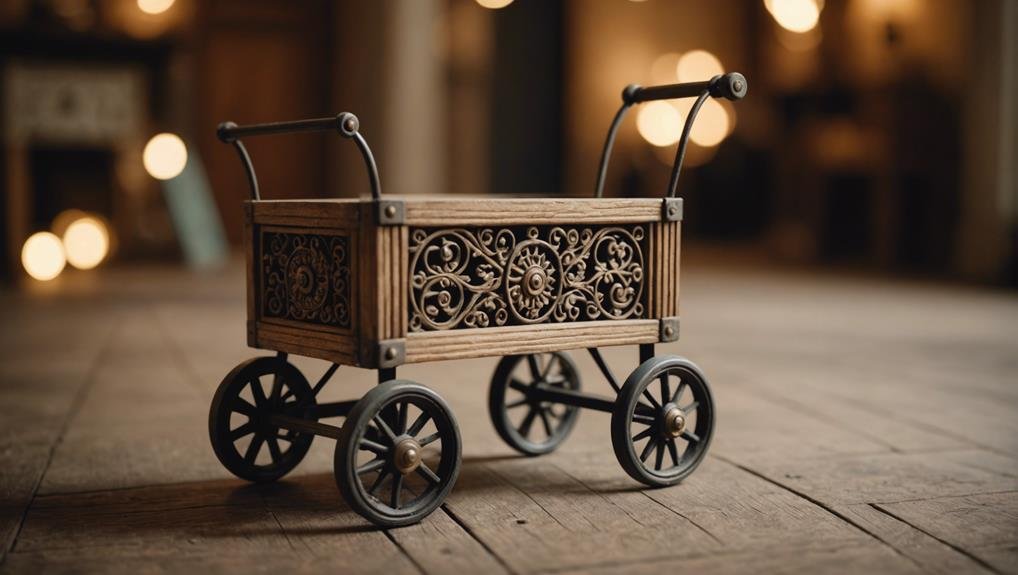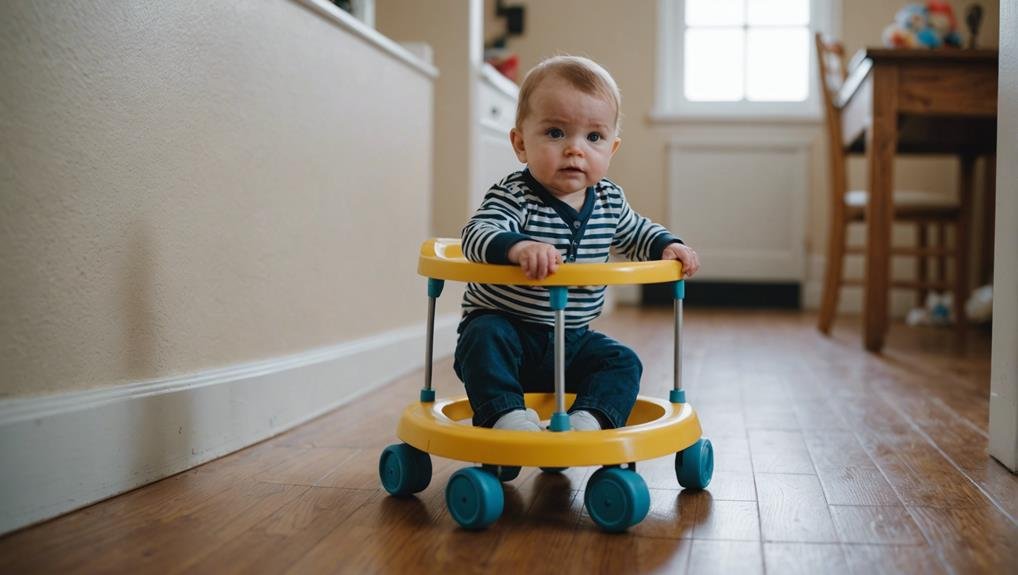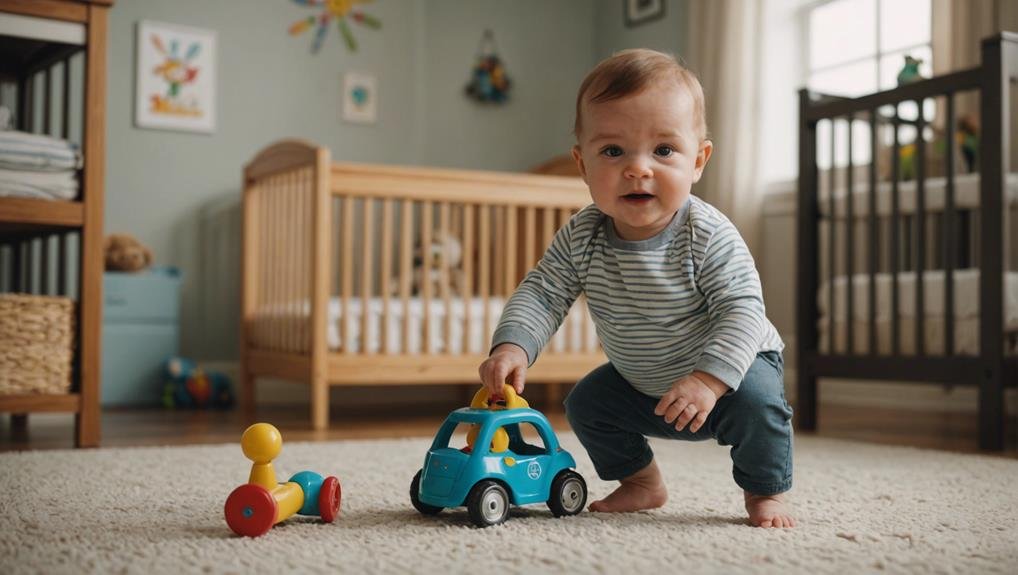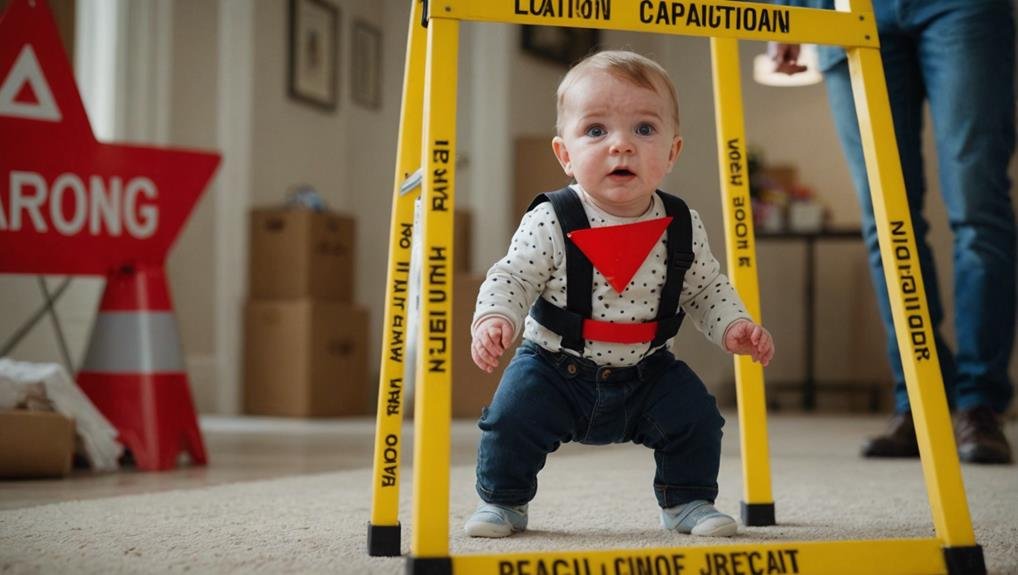"Cherishing Little Steps - A Haven for Baby and Family Journeys"
Baby Walker
When it comes to baby walkers, you might have heard mixed opinions on their benefits and risks. However, understanding the nuances of this tool can help you make informed decisions for your little one's development. From the history of baby walkers to the safety guidelines and alternatives available, there's a lot to consider. So, before making your choice, it's crucial to weigh the pros and cons carefully to ensure your baby's well-being and growth are prioritized.
History of Baby Walkers

Baby walkers have a long and interesting history that dates back several centuries. The evolution of walkers can be traced through various cultures and time periods. Initially, baby walkers were simple wooden frames with wheels that allowed infants to move around while being supported. Over time, they've evolved into the modern designs we see today, incorporating safety features and interactive elements to aid in child development.
The cultural impact of baby walkers has been significant. In many cultures, baby walkers are seen as a valuable tool for helping infants explore their surroundings and develop motor skills. They're often used as a means of promoting independence and mobility in babies. However, it's essential to note that cultural attitudes towards baby walkers can vary, with some experts expressing concerns about potential safety risks.
Understanding the history and cultural significance of baby walkers can provide valuable insights into their role in child development and caregiving practices. By exploring their evolution and impact, you gain a deeper appreciation for the role these devices play in the lives of infants and their families.
Benefits of Using Baby Walkers
Enabling infants to explore their surroundings safely, baby walkers offer developmental benefits that aid in fostering early mobility skills. By providing a secure environment for your little one to move around, baby walkers contribute to their physical and cognitive development. Here are some key advantages of using baby walkers:
| Developmental Benefits | Mobility Assistance |
|---|---|
| Supports muscle strength and coordination | Helps babies practice standing and walking |
| Stimulates sensory exploration | Encourages independence and confidence |
| Enhances spatial awareness | Facilitates interaction with surroundings |
| Promotes cognitive development | Assists in balance and stability |
| Fosters early socialization skills | Allows for exploration in a controlled setting |
These benefits not only assist babies in their journey towards independent mobility but also play a crucial role in their overall growth and development. Baby walkers can be a valuable tool in nurturing your child's early skills and providing them with a safe space to learn and explore.
Risks Associated With Baby Walkers

Exploring the potential drawbacks of baby walkers reveals important considerations for ensuring the safety and well-being of your infant. While baby walkers can provide entertainment and mobility, it's crucial to be aware of the associated risks. One of the primary concerns is injury prevention. Babies in walkers can move quickly and reach hazardous areas, increasing the risk of falls down stairs, collisions with furniture, or burns from reaching hot objects.
It's essential to create a safe environment by blocking off stairs, padding sharp corners, and removing any potential dangers within reach.
Parental supervision is paramount when your baby is in a walker. Even with safety measures in place, accidents can happen in seconds. Always keep a close eye on your little one while they're using the walker. Avoid leaving them unattended, especially near water sources, kitchens, or other risky areas.
Types of Baby Walkers Available
When choosing a baby walker, consider the various designs and features available to cater to your infant's needs and preferences. Safety features are paramount when selecting a baby walker. Look for features like sturdy construction, anti-slip grips, and safety locks to ensure your little one stays secure while exploring.
Design options vary widely, from traditional seated walkers to modern push-along styles. Seated walkers provide a comfortable seat for your baby to rest in while being mobile. These often come with interactive toys to keep your infant entertained.
Push-along walkers, on the other hand, encourage your child to take steps independently by holding onto the handle and pushing the walker forward. Some walkers even convert from seated to push-along, offering versatility as your baby grows and develops.
Consider your space and lifestyle when choosing a design. Foldable walkers are convenient for storage and travel, while adjustable height settings accommodate your baby's growth. Ultimately, selecting a baby walker with the right safety features and design options ensures a fun and secure experience for your little explorer.
How to Choose the Right Baby Walker

To ensure you select the right baby walker for your little one, it's crucial to consider key factors such as safety features, design preferences, and practicality for your lifestyle.
When it comes to safety features, opt for walkers with features like a wide base for stability, nonslip grips, and safety certifications. These aspects can help prevent accidents and provide a secure environment for your child to explore. Additionally, consider the age suitability of the walker. Some models cater to specific age ranges to ensure proper development and safety.
Design preferences also play a significant role in choosing the right baby walker. Look for a design that appeals to you and your little one, as this can make the experience more enjoyable for both of you.
Practicality is another essential factor to keep in mind. Consider aspects like adjustable height settings, foldability for storage, and ease of cleaning to make your life easier. By carefully evaluating these factors, you can select a baby walker that meets your child's needs while providing a safe and enjoyable experience.
Proper Usage of Baby Walkers
For a safe and beneficial experience, it's important to understand the proper usage of baby walkers. Parental supervision is crucial whenever your little one is in the walker. Always ensure that your baby is within your sight to prevent accidents and provide immediate assistance if needed. Safety precautions are essential to follow, such as keeping the walker away from stairs, pools, and other hazards.
When using a baby walker, consider your child's developmental milestones. It's vital to remember that a walker should complement your baby's mobility skills, not replace the natural process of learning to walk. Encouraging your baby to practice standing and taking steps without relying solely on the walker can aid in the development of their balance and coordination.
Alternatives to Baby Walkers

Consider exploring alternative options to baby walkers that can promote your child's development in a safe and effective manner. Parental supervision is crucial in guiding your little one through their developmental milestones.
Instead of relying on a baby walker, you can opt for interactive play centers or stationary activity centers that encourage your child to stand, bounce, and play while being securely supported. These alternatives help strengthen your baby's leg muscles and improve balance without the risks associated with traditional baby walkers.
Another great alternative is using push toys or wooden blocks that your child can hold onto while taking their first steps. These toys not only support your child's physical development but also enhance their hand-eye coordination and cognitive skills.
Furthermore, baby-proofing your home and creating a safe environment where your child can freely explore and learn to walk without the aid of a walker is essential in fostering independence and confidence.
Baby Walker Safety Guidelines
Prioritize your child's safety by following essential guidelines when using a baby walker. Ensuring parental supervision is crucial to prevent accidents.
Always assemble the baby walker according to the manufacturer's instructions to guarantee its stability and functionality. Choose age-appropriate surfaces for your little one to navigate on, avoiding stairs, uneven terrain, and areas near pools or other water sources. Additionally, be mindful of weight restrictions specified by the manufacturer to maintain the walker's structural integrity.
Remember that accidents can happen in the blink of an eye, so stay vigilant and attentive when your child is using the walker.
By adhering to these safety guidelines, you can create a secure environment for your little explorer to move around freely while providing the necessary support for their developmental milestones.
Your child's safety is paramount, and by following these precautions, you can help prevent potential mishaps and ensure a positive experience with the baby walker.
Baby Walker Recall Information

Be aware of any recent recalls involving baby walkers to ensure your child's safety. Product safety is paramount when it comes to baby gear. Stay informed about baby walker recall information to protect your little one from potential hazards. Consumer awareness plays a crucial role in preventing accidents related to faulty baby walkers. Taking precautions by checking for recalls and ensuring the baby walker meets safety standards is essential for a worry-free experience.
| Brand | Model | Issue | Action |
|---|---|---|---|
| ABC Baby Co. | Walker X1 | Fall hazard | Contact manufacturer for refund or repair |
| XYZ Products | Dream Walker | Choking hazard | Cease use immediately |
| BabySafe Inc. | Roll n' Go | Tip-over risk | Request a replacement |
| Little Feet | Speedy Walker | Brake malfunction | Return for a full refund |
Always prioritize your child's safety by staying informed about baby walker recalls and acting promptly if your baby walker is affected. Remember, a vigilant parent is a child's best protector.
Tips for Enhancing Baby Walker Experience
To ensure a positive and safe experience for your child using a baby walker, here are some valuable tips for enhancing their time in this gear.
First and foremost, consider choosing a walker that comes with interactive toys. These toys can engage your little one, making their time in the walker more enjoyable and stimulating.
Additionally, opt for a walker that includes a music feature. Music can captivate your child's attention, providing entertainment as they move around in the walker.
When using the baby walker, encourage your child to explore the interactive features by praising their interactions and providing positive reinforcement. Engaging with the walker's toys and music can enhance your child's sensory experience and cognitive development.
Remember to supervise your child at all times while they're in the walker to ensure their safety and well-being.
Frequently Asked Questions
Can Baby Walkers Help With Early Walking Development?
When it comes to early walking development, focusing on motor skills and balance is key. Remember, parental supervision is crucial for safety. Baby walkers can provide support, but make sure to use them cautiously.
Are Baby Walkers Safe to Use on All Types of Flooring?
When considering flooring for baby walker use, remember carpet provides a cozy and secure surface. Hardwood floors might raise some concerns. Tiles pose risks, while rugs offer comfort and stability. Prioritize safety and comfort for your little one.
How Long Can a Baby Stay in a Walker Each Day?
You should limit your baby's time in a walker to around 15-20 minutes a day. Excessive use can hinder healthy development. Make sure to offer plenty of floor time for natural exploration and movement.
Do Baby Walkers Affect a Child's Natural Walking Process?
Exploring freely helps your little one develop motor skills naturally. While some believe baby walkers could affect this process, with proper supervision and safety measures, these concerns can be minimized.
Are There Age Restrictions for Using Baby Walkers?
For safety concerns and to support healthy development, it's essential to follow age restrictions when using baby walkers. They are designed for specific age ranges to ensure your child's safety and promote proper development.
Conclusion
As you navigate the world of baby walkers, remember to prioritize safety and choose a walker that best suits your child's needs.
Just like a guiding hand helping a young bird learn to fly, a well-chosen baby walker can support your little one's journey towards independence and exploration.
By following safety guidelines, staying informed about recalls, and enhancing the experience with interactive play, you can make the most of this valuable tool in your child's development.




